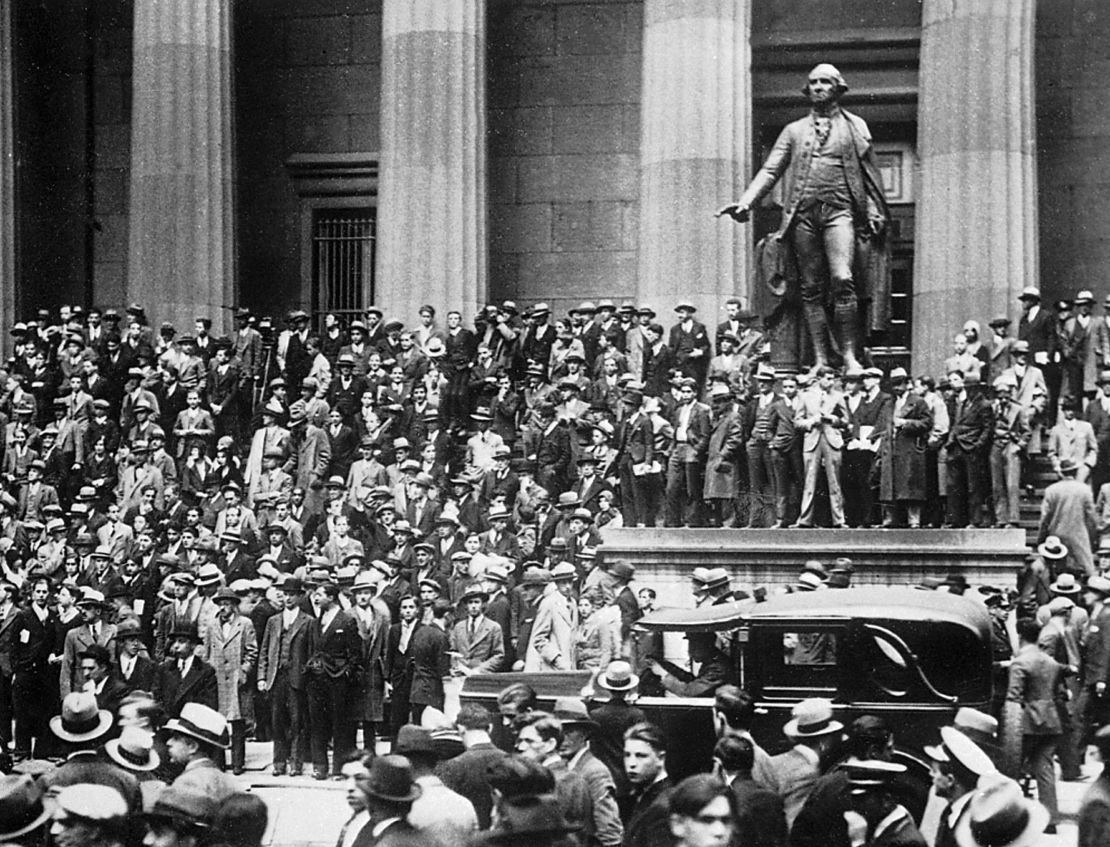In the Roaring ’20s, jazz raged, glamor thrived, and consumerism reigned supreme.
That is, until October 1929, when the booming market took a swift nosedive, flinging the American public into a panic.
It began on Thursday, October 24 – known as Black Thursday – when almost 13 million stock shares were traded, kicking off the market’s free fall into complete collapse the following Tuesday.
The incredibly sudden market crash was one of many factors that ushered in the Great Depression of the 1930s.
Not a crash in sight
Months before Black Thursday, the US stock market was booming.
Stock prices were sky-high, and Americans rushed to invest, hoping they would later be able to sell at a profit. Some even sold their bonds and mortgaged their homes in an effort to ride the rising wave.
The flood of spending was encouraged by the development of an industry of lending opportunities that allowed ordinary consumers to borrow large sums of money and invest it.
As the market ballooned with cash, the Dow Jones Industrial Average reached an unprecedented 381 in September 1929.
How it all went wrong
But the market, swollen with borrowed money, was vulnerable to collapse.
The scenario – rife with loans, cash withdrawals, and check deposits – strained banks, and many became temporarily short on reserves. The Federal Reserve Bank of New York made moves to cushion banks from potential disruptions, which would protect many commercial banks from shuttering during the crash.
Stock prices, which had begun declining in late September and early October, began to nosedive on October 18, as investors hastened to sell.

Six days later, Black Thursday hit, with 12.9 million shares sold in a rush to cut losses. This began a series of dark days, including the following Black Monday. It all culminated on Black Tuesday, October 29, when more than 16 million shares were traded, rounding out the crisis.
Many people lost their investments when stock prices plummeted. Some were even left owing money that they had borrowed and invested.
The market crash and sudden loss of personal investments left Americans hesitant to spend money, and consumers bought more carefully, slowing the flow of cash into the market.
